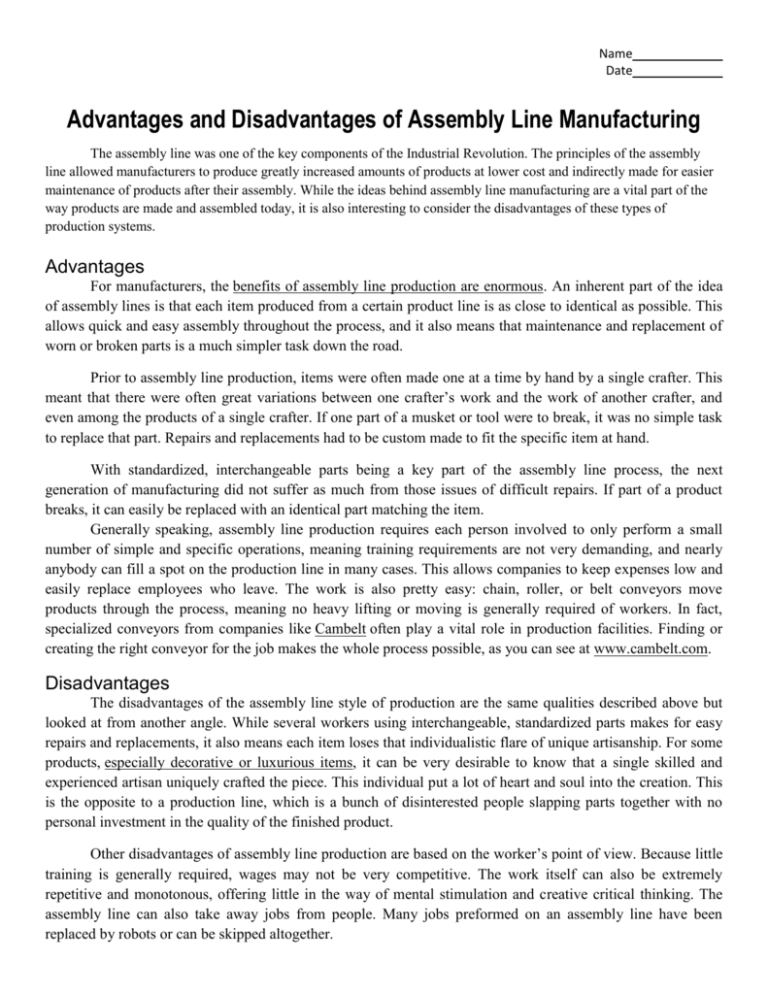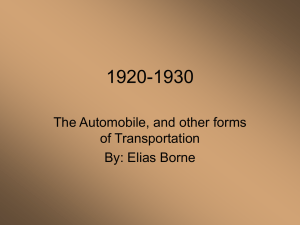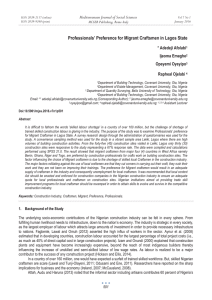Assembly Line Manufacturing: Pros & Cons
advertisement

Name Date Advantages and Disadvantages of Assembly Line Manufacturing The assembly line was one of the key components of the Industrial Revolution. The principles of the assembly line allowed manufacturers to produce greatly increased amounts of products at lower cost and indirectly made for easier maintenance of products after their assembly. While the ideas behind assembly line manufacturing are a vital part of the way products are made and assembled today, it is also interesting to consider the disadvantages of these types of production systems. Advantages For manufacturers, the benefits of assembly line production are enormous. An inherent part of the idea of assembly lines is that each item produced from a certain product line is as close to identical as possible. This allows quick and easy assembly throughout the process, and it also means that maintenance and replacement of worn or broken parts is a much simpler task down the road. Prior to assembly line production, items were often made one at a time by hand by a single crafter. This meant that there were often great variations between one crafter’s work and the work of another crafter, and even among the products of a single crafter. If one part of a musket or tool were to break, it was no simple task to replace that part. Repairs and replacements had to be custom made to fit the specific item at hand. With standardized, interchangeable parts being a key part of the assembly line process, the next generation of manufacturing did not suffer as much from those issues of difficult repairs. If part of a product breaks, it can easily be replaced with an identical part matching the item. Generally speaking, assembly line production requires each person involved to only perform a small number of simple and specific operations, meaning training requirements are not very demanding, and nearly anybody can fill a spot on the production line in many cases. This allows companies to keep expenses low and easily replace employees who leave. The work is also pretty easy: chain, roller, or belt conveyors move products through the process, meaning no heavy lifting or moving is generally required of workers. In fact, specialized conveyors from companies like Cambelt often play a vital role in production facilities. Finding or creating the right conveyor for the job makes the whole process possible, as you can see at www.cambelt.com. Disadvantages The disadvantages of the assembly line style of production are the same qualities described above but looked at from another angle. While several workers using interchangeable, standardized parts makes for easy repairs and replacements, it also means each item loses that individualistic flare of unique artisanship. For some products, especially decorative or luxurious items, it can be very desirable to know that a single skilled and experienced artisan uniquely crafted the piece. This individual put a lot of heart and soul into the creation. This is the opposite to a production line, which is a bunch of disinterested people slapping parts together with no personal investment in the quality of the finished product. Other disadvantages of assembly line production are based on the worker’s point of view. Because little training is generally required, wages may not be very competitive. The work itself can also be extremely repetitive and monotonous, offering little in the way of mental stimulation and creative critical thinking. The assembly line can also take away jobs from people. Many jobs preformed on an assembly line have been replaced by robots or can be skipped altogether. Name Date Division of Labor, Assembly Line Thought - The Paradox of Democratic Capitalism By - January 29, 2004 Division of labor is one of the hallmarks of capitalism. The division of labor, in fact, contributes to increased efficiency in production, proved most masterfully by Henry Ford and his advances in assembly line manufacturing. The division of labor has many advantages - let us first examine how the division of labor leads to increased productivity. Ford's automobile assembly line production innovations provide the perfect example. Prior to Ford's advancement of the assembly line for automobile production, cars were primarily produced by craftsmen, as was the case with most things. Each car was individually produced by a team of craftsmen, and each of these craftsmen had to be highly skilled and very knowledgeable about the mechanics of cars in order to build them. Every person on the team had a very good working knowledge of virtually all aspects of car manufacture. Many of these craftsmen were capable of building an entire car by themselves. Not only did they have the skills, but they designed the cars, understood the mechanics, understood physics, engineering, metallurgy, etc. They had a wide range of knowledge and skills, often a complete set of skills and knowledge about the cars they were building. Then Henry Ford came along and started to build cars using an assembly line process. With the assembly line a small team of people designed the car and assembly process, and a larger team of unskilled workers built the cars. What was so remarkable about Ford's process was that any man off the street, even if he had never seen a car before, could work on the assembly line and with a few instructions he could be a part of the team building cars. In fact it was found that this process was faster, cheaper and more efficient. There was less overlap of skills or knowledge, every person knew what they needed to do their job and that was it. To help build a car a worker no longer had to know much of anything about cars, in fact you could have a team of assembly-line workers building cars faster than a team of skilled craftsmen, even if there was not one single person on the assembly-line who knew how to build a car himself. A worker could work on the wheel assembly section without having ever seen a car motor in his life. With the division of labor the individual needs only to know how to do his specific task and nothing more. The assembly-line worker requires no large-scale knowledge, no vision, no concept of the whole. As long as the worker can turn the screw when the piece is in front of him that's all he needs to know and do. In fact, this allows each worker to focus on perfecting a specific set of skills and can actually lead to increased quality.








